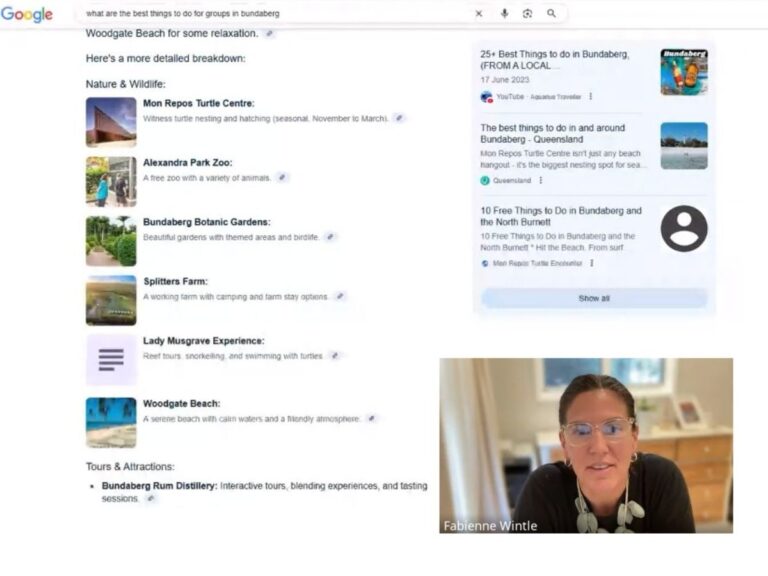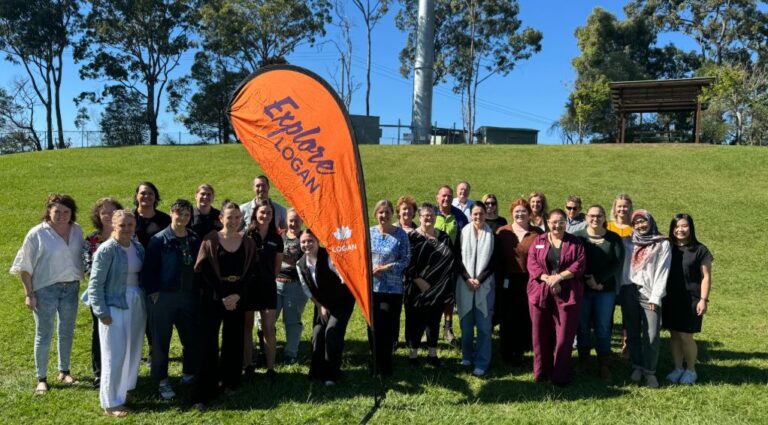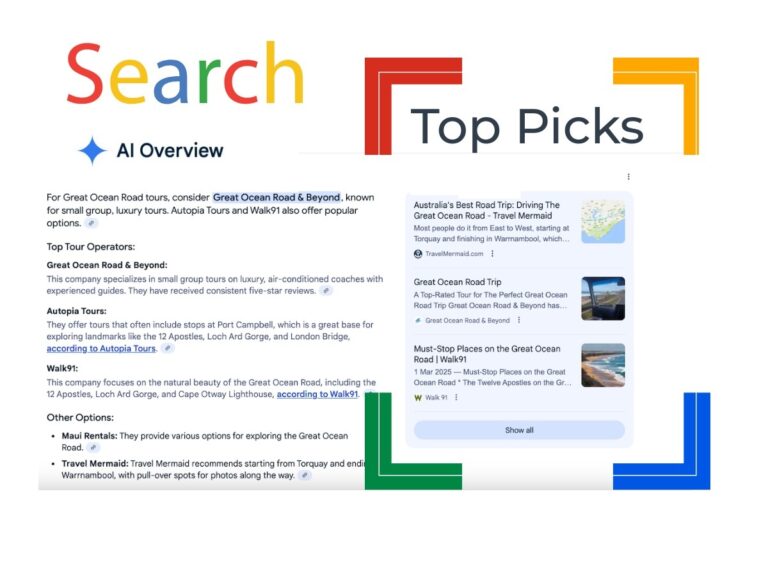
Get Seen by AI (and Real People): What We Covered in Our Latest Tourism Tech Session
Learn how to make your tourism website discoverable in AI search tools like ChatGPT and Google’s AI Overview using GEO, schema, blogs, and smart SEO.

In today’s digital world, the power of online accessibility is one of the most understated search engine optimisation (SEO) strategies, and here you will find eight reasons your website must be inclusive. Not just a nice-to-have feature but a necessity for creating an inclusive online experience. In this article, we will delve into the importance of the power of online accessibility and its impact on users, businesses, as well as SEO benefits. We’ll explore the recent insights gained from the Getaboutable.com Accessible & Inclusive Tourism Conference, highlighting the significance of online accessibility in the tourism industry. Additionally, we’ll discuss the role of SEO in driving website visitation and the benefits of aligning your online accessibility practices with SEO guidelines and best practices.

Recently we wrote about accessible tourism, what it is, and why you should consider it for your small business. At the heart of online accessibility, however, is the ability to empower individuals of all abilities to access and engage with your website and online content. By making your website inclusive, your business can provide equal opportunities and promote social inclusion. We’ll reflect on some of the key takeaways from the GetaAboutable conference, emphasising the importance of demonstrating online accessibility beyond mere descriptions. In addition, we will explore the adoption of an inclusive attitude as well as leveraging technology as an enabler.
To help you connect the two, we will provide a brief overview of SEO, its role in improving website visibility on search engines, and its impact on driving organic traffic.
By shifting the focus from search engine algorithms to an inclusive user experience, your business will immediately improve your online accessibility and what I affectionally call your ‘findability’. That is your website’s ability to be found on all the major search engines, especially Google. We’ll discuss the importance of incorporating online accessibility practices to enhance the user journey and cater to individuals with disabilities.
To illustrate the impact of online accessibility on SEO and user experience, we’ll further explore practical tips that small tourism businesses can implement. Each tip enhances ‘tourism for good’ and ‘tourism for all’ because it is good for your visitors, your destination, and your business. You will help your website be present for the people that need your product and tourism experience most. Eight ways you can make your website accessible and enhance your search engine optimisation efforts include:
Alt text is a textual description added to an image, providing information about the image’s content. Descriptive alt text enhances online accessibility by allowing individuals using screen readers or those with visual impairments to understand the image’s context. Additionally, alt text is crucial for SEO, as search engines rely on it to understand the image’s content and index it appropriately, especially when searching via images.
Captions provide text-based transcriptions of the audio content in videos. They benefit individuals with hearing impairments, allowing them to follow the dialogue and understand the video’s message. Captions also contribute to SEO by providing additional textual content that search engines can crawl and index, improving the video’s visibility and search rankings.
Instead of generic phrases like “click here,” descriptive link text provides a concise and meaningful description of the linked content. This improves user experience by clearly indicating where the link leads, helping users navigate and find relevant information easily. From an SEO perspective, descriptive link text improves search engine visibility because it provides context and relevance to both users and search engines.
Clear and readable content benefits all users, including those with cognitive disabilities as well as non-native speakers. Using plain language and simplicity of language improves comprehension and accessibility. The contrast of colour refers to ensuring sufficient contrast between text and background, making the content legible for all users, including those with visual impairments. These elements also contribute to SEO by enhancing user experience and engagement, positively affecting search engine rankings.
Audio descriptions are narrated descriptions of the visual elements in a video, enabling individuals with visual impairments to understand the video’s content. By providing audio descriptions, videos become accessible to a broader audience, ensuring inclusivity. While audio descriptions do not directly impact SEO, they contribute to creating a more accessible and user-friendly website, which indirectly benefits search engine rankings. An excellent tool to be able to do this is YouDescribe.org. On You Describe you can upload videos and add synchronised audio descriptions describing the video’s visual elements, actions, and key details.
Online accessibility also means creating inclusive social media posts that consider online accessibility features such as image descriptions, alt text, and inclusive language. By implementing these practices natively in the various mainstream platforms, social media content becomes accessible to individuals living with a disability, expanding the reach and engagement of the posts. Inclusivity in social media posts can also positively impact SEO by increasing user engagement and driving traffic to the website.
Unique and descriptive titles and headings improve online accessibility by providing clear organisation and structure to the content. This helps individuals using screen readers navigate the page more effectively. From an SEO perspective, unique titles and headings contribute to better search engine visibility as they provide relevant keywords and improve the page’s overall structure.
Using actual text instead of images of text ensures that the content is accessible to individuals using screen readers or those who need to resize text for better readability. Images of text can be inaccessible and limit the ability to adjust text size. By using actual text or providing text alternatives, accessibility is enhanced, and SEO improves as search engines can crawl and index the text, improving keyword relevance and search rankings.
In summary, online accessibility is not a legal requirement. It is a moral obligation that brings numerous benefits to your business and community. By prioritising online accessibility, your business can create a more inclusive online environment, improve user experience, attract a wider audience, and enhance its search engine rankings. The integration of online accessibility practices with SEO guidelines ensures that your business not only reaches its target audience but also empowers and includes individuals living with a disability. Embracing online accessibility is a win-win solution for both users and businesses, paving the way for a more inclusive and accessible digital landscape.


Learn how to make your tourism website discoverable in AI search tools like ChatGPT and Google’s AI Overview using GEO, schema, blogs, and smart SEO.

25 Logan tourism businesses improved their digital presence through hands-on coaching, audits, and tailored support through this council-led tourism digital support program.

Learn what Google SGE’s AI Snapshot Cards (Top Picks) are, why they matter for tourism marketing, and how to get your business featured in these coveted AI results.